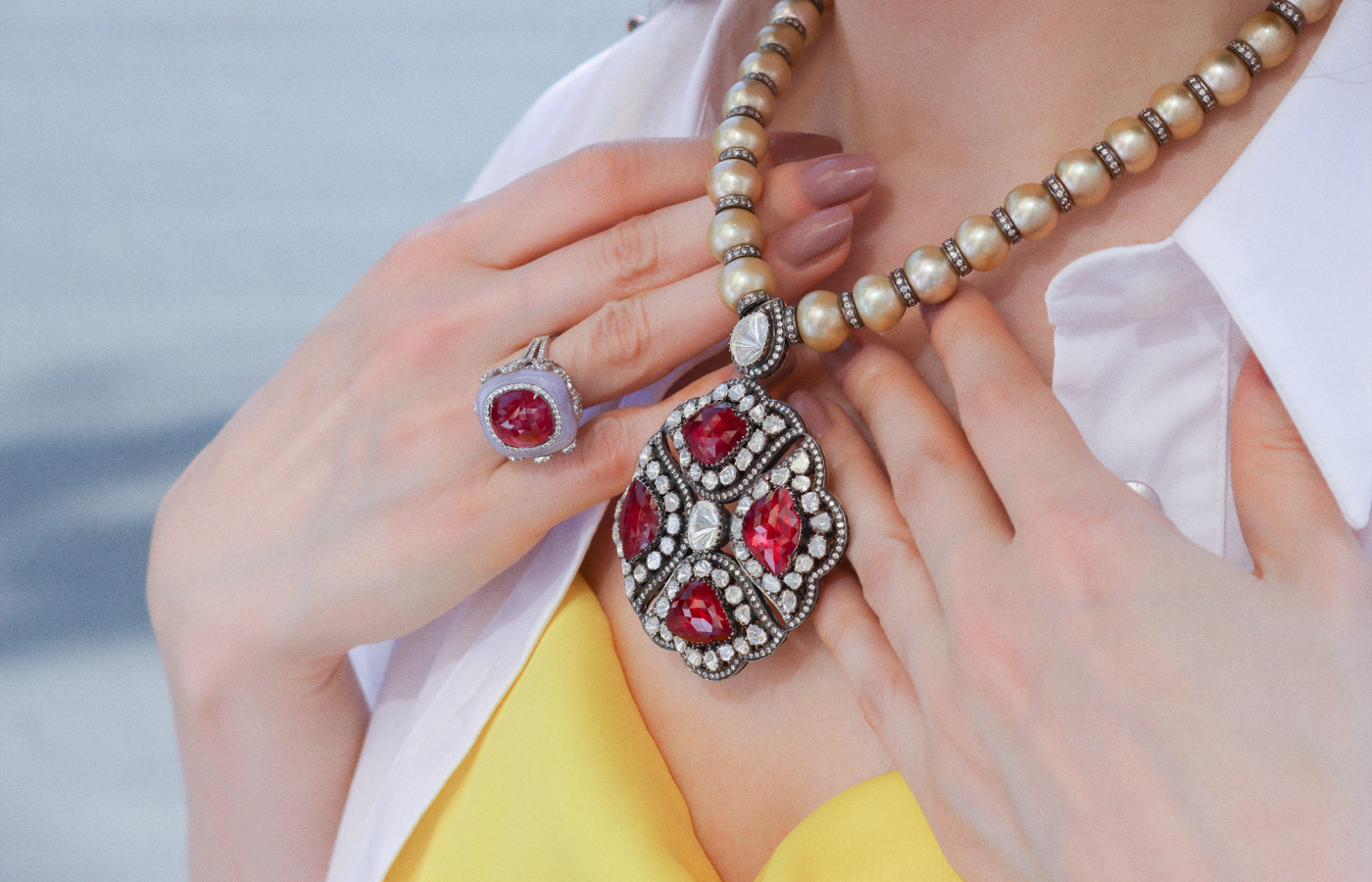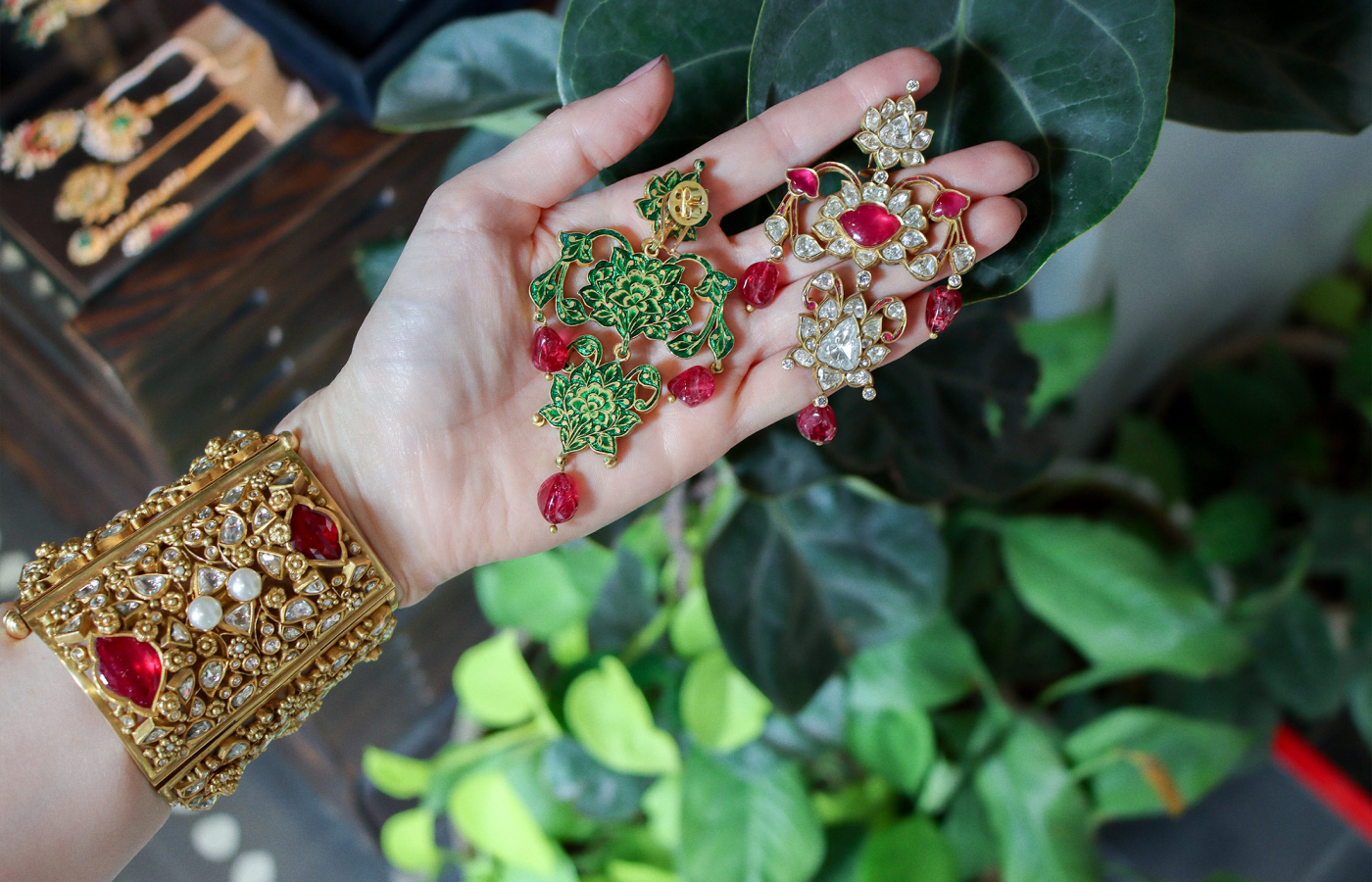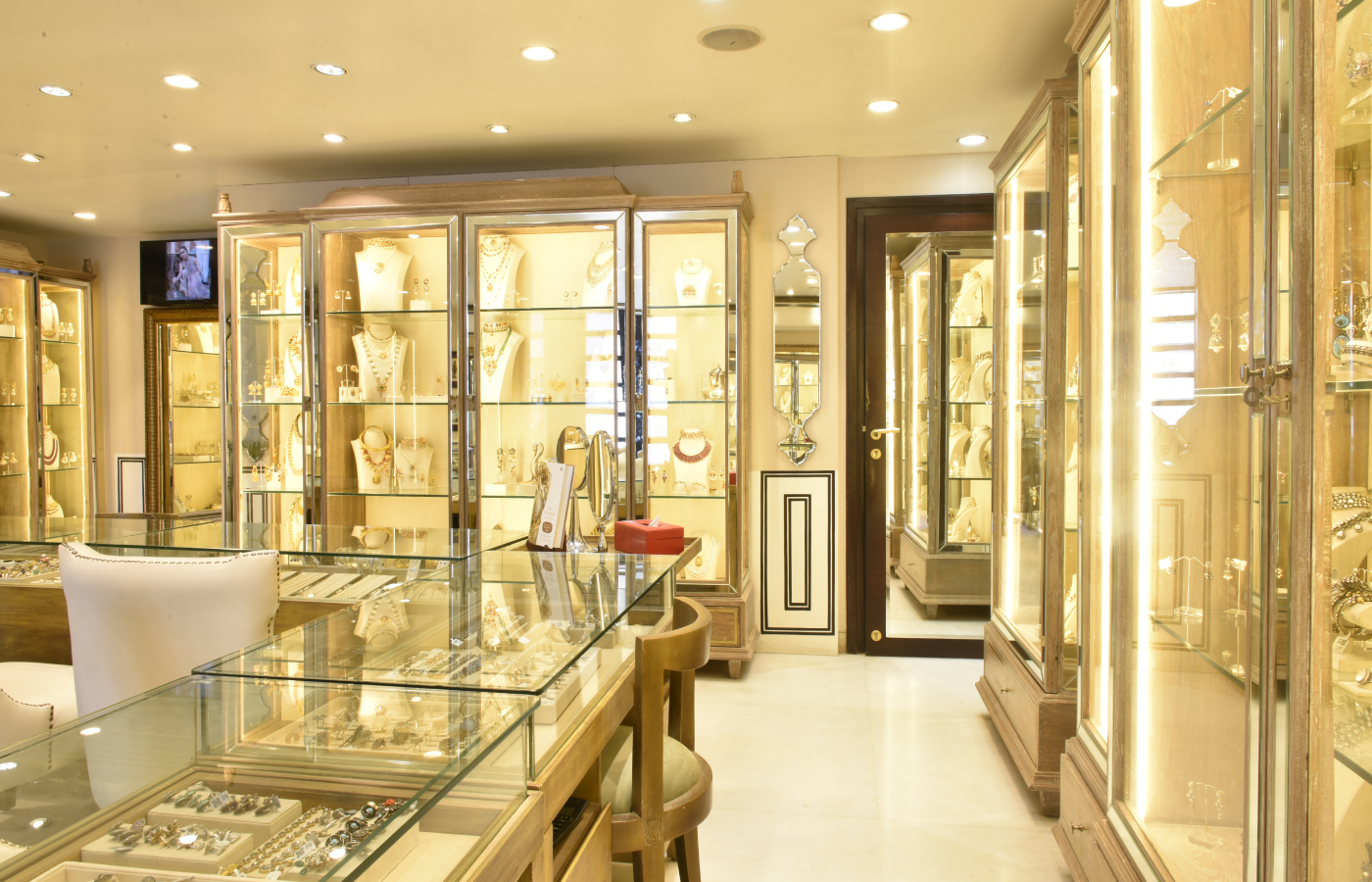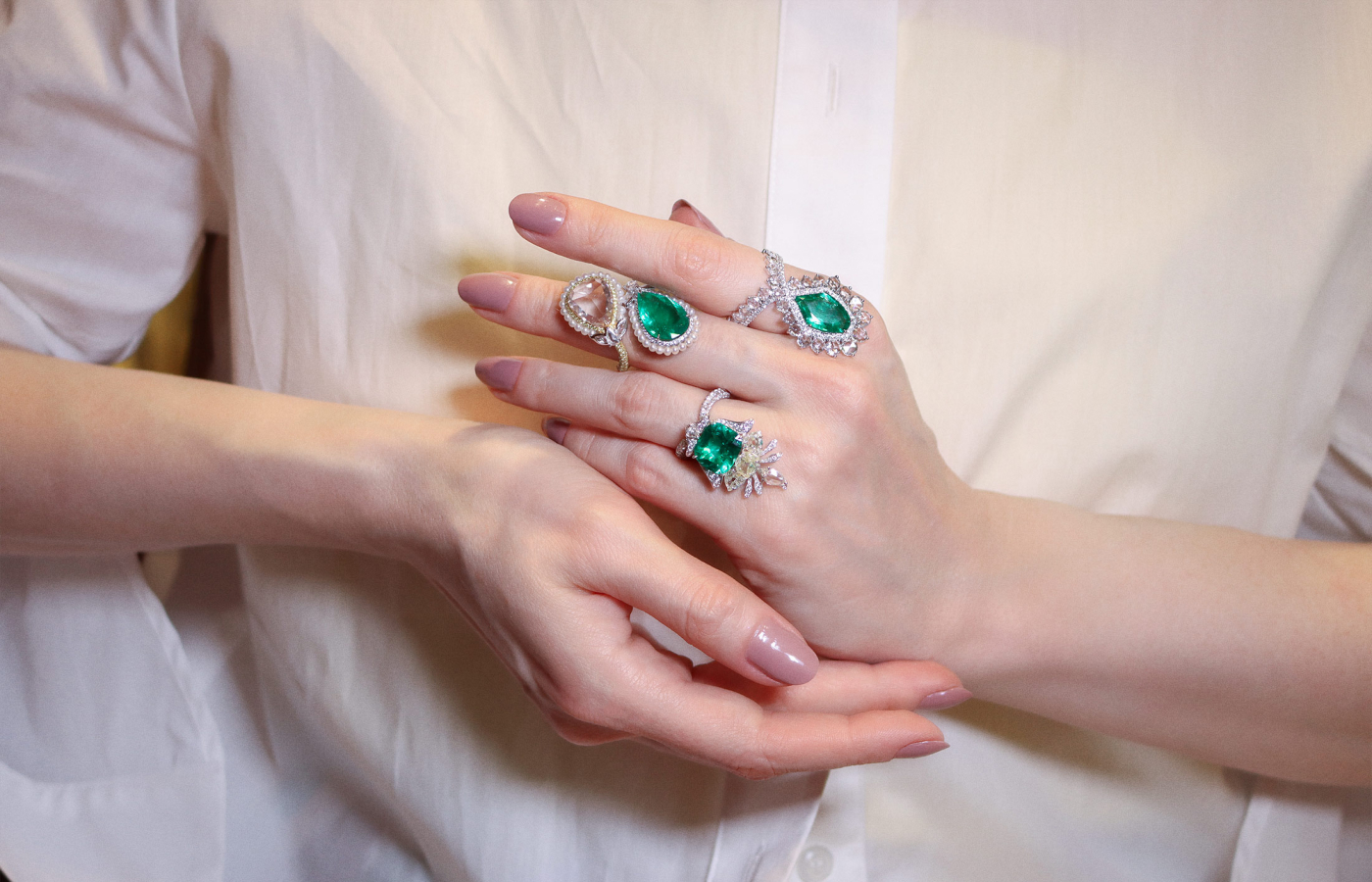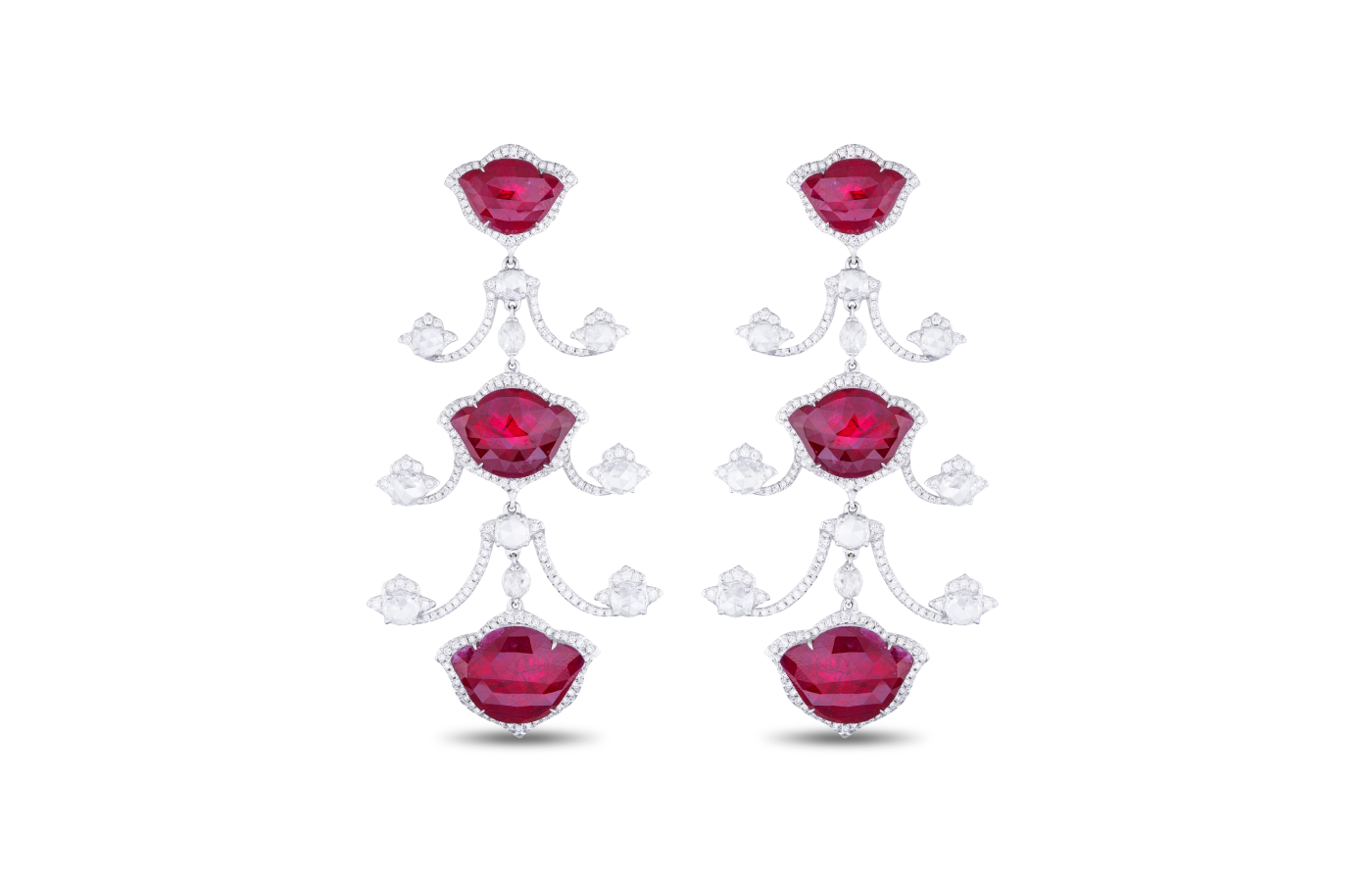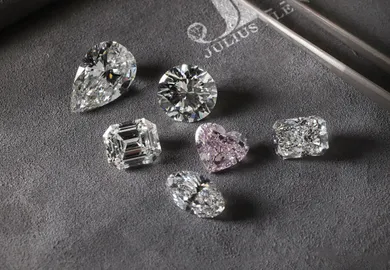

World View: How Amrapali Blends Indian Tradition with Modern Eclecticism
On a recent visit to the bustling city of Jaipur, I visited the Amrapali boutique in the Panch Batti neighbourhood to immerse myself in its signature blend of ancient craftsmanship and modern sensibility. The brand has been on my radar for quite some time, so it was enlightening to dive into its history, ethos and inspirations with CEO and Creative Director Tarang Arora. During our conversation, I discovered some nuances that surprised me, which I am pleased to share in this article…
Amrapali was a woman. Or, at least, she’s a presumed real, perhaps mythological woman who is said to have lived around 500 BC. This ancient Indian courtesan is something of a muse, mentioned in the Old Pali and Buddhist traditions, representing femininity, beauty, and charm. The Amrapali we know today draws its name from this mysterious figure, despite the fact that the company was founded by two brothers – Rajiv Arora and Rajesh Ajmera in the late 1970s. Their shared history reads like something from a storybook, too, starting with a pilgrimage across India to study the unique jewellery worn by tribal communities. Their experiences bartering for objects in markets morphed into an obsession with Indian decorative arts and ancient techniques, which they channelled into luxurious jewels with a modern, eclectic twist.

Amrapali co-founder Rajiv Arora with the late Queen Elizabeth II
The Amrapali of today keeps this heritage alive, namely through its second-generation creative director, Tarang Arora, who I first met about 10 years ago at the very beginning of my jewellery writing career. One thing that was engraved into my memory was a statement stack of bangles on Tarang’s wrist that he wears to this day. It was an eclectic mix of jewels with a strong personality like many Amrapali designs. Even then, I remember Tarang telling me: “The brand was founded with the idea of preserving heritage skills, which it has done very well over the years”.
To achieve its continuous tribal inspirations and dedication to the best practices of jewellery making in India, the brand has prioritised handcraftsmanship, specifically arts that could easily be lost to time were they not in safe hands. “No matter how modern or futuristic a design might be, it must have traditional craftsmanship involved with handmade skills, even when we are producing a large number of pieces,” Tarang shares with me while presenting rings and earrings with a subtle vintage flair made with the finest emeralds and diamonds. Personally, I believe this is what sets Amrapali apart: the look and feel of hand-making infused into pieces, whether they are wholly traditional in style or more internationally orientated for its global clientele.

Katerina Perez wearing an Amrapali ring in gold set with rubies and diamonds
The brand is known for multiple techniques, including its detailed work in 24k gold. I have always been drawn to its larger pieces, including grand chandelier earrings, beautiful suites of jewels, cuff bracelets and conversation-starting cocktail rings. Many of these designs are decorated with enamel – a signature of the house – as well as lotus-cut gemstones, notably rubies shapes as the brand’s logo. “There are lots of different techniques that we are known for,” he explains, “however, these must resonate from Jaipur, originate from India, and feature a lot of handwork and detailing. That is what people expect from Amrapali.”
If you ever have the chance to visit the Amrapali boutique in Jaipur or, indeed, one of its many other stores or stockists across India, the UK, the USA, Qatar and the Emirates, then you’ll know that this focus on the past hasn’t stopped it from looking to the future. Over the decades, the brand has changed with the times and studied the wider world for inspiration and new ideas. Now, its jewels originate from Indian culture but also global cultures and are infused with techniques from far and wide. According to Tarang, “the world is a much smaller place today”. He continues: “We tend to soak up skills when we go out and see different ways of making jewellery. We try to empower our craftsmen with that knowledge and provide them with the details and the tools to make those changes and combine them with Indian craftsmanship.”

Katerina Perez wearing an Amrapali Golconda Diamond ring set with a 5-ct Golconda diamond, rose-cut diamonds and diamonds
And it’s not simply about the craftsmanship. Amrapali has learned from its customers, too, about what works well in different countries and what buyers are searching for. For example, it was the first Indian brand to launch in Selfridges department store in London in 2002 and has since flourished in Harrods, via its own boutiques in London and through Lane Crawford and Neiman Marcus in North America. Tarang says that when clients in these regions think about Amrapali, they think of detailed work, perhaps even “a Boho chic look”, and are often pairing pieces with traditional Indian clothing, eveningwear, or something casual during the day.
As someone from outside of Indian culture looking in, I have always appreciated the inherent confidence in Amrapali jewels, whether it’s the generous proportions, the extraordinary use of polki diamonds, the meticulous details (front and back), the use of enamel or the juicy cabochons, beads and briolettes used as embellishments! Arora says that he is also “biased towards emeralds” and uses them more liberally in his bejewelled experiments. He says: “The beautiful part is they are softer stones and can be easily recut and reworked. For me, working with gemstones is a lot more appealing compared to diamonds. There are so many different shades of emeralds and blue sapphires depending on their composition of the material and the mines they come from.”

Katerina Perez wearing Amrapali earrings in gold set with over 177-cts of emeralds and diamonds
But the story always comes back to Indian tradition… after all, where better to access an inspirational palette of coloured minerals than Jaipur, the world centre of gemstone cutting?! “We are lucky enough to get the first pick,” he adds. “If I was based in Surat, Ahmedabad or Bombay, maybe I would have been more inclined towards diamonds, but, due to the fact that we are in Jaipur, we are a more gemstone-orientated brand.” As a case in point, we spoke about a recent emerald and diamond bracelet crafted with a vintage look, set with Old European-cut diamonds, yellow diamonds and Brazilian emeralds – the perfect blend of old and new.
When I was looking back through the archives of KaterinaPerez.com for previous mentions of Amrapali, I came across the Al Thani collection that wowed the Victoria & Albert Museum back in 2016. To create footage of traditional Indian craftsmanship in action for the exhibition, the V&A filmed inside the Amrapali workshop and watched as one of its team members produced a beautiful enamel pendant. It’s opportunities like this that have acted as milestones in the Amrapali story. Others are more personal for Tarang, such as speaking at the third CNI Luxury Conference, hosted by Vogue magazine’s Suzy Menkes in Oman in 2016 (one of only three Indian speakers), and watching his father and uncle attend a cultural exchange between the UK and India at Buckingham Palace, hosted by the late Queen Elizabeth II.
This is also an opportune moment to mention the Amrapali Museum, which is a labour of love for the brand’s founders, Rajiv Arora and Rajesh Ajmera. When they started their journey, neither were trained in jewellery and upon learning about traditional handicrafts, they “could not find a single place to learn about Indian jewellery, craftsmanship or tribal jewellery,” Tarang explains. After 40 years of collecting jewellery and precious objects, the Amrapali Museum contains over 4000 pieces, with roughly 800 on display.
He continues: “There is no other museum like this in the world that’s dedicated to Indian jewellery of this size or magnitude, especially traditional Indian jewellery worn by the common man, lords, nobility and royalty.” Interestingly, the museum also highlights how foreign powers, such as the British, Portuguese, and French, influenced Indian jewellery making, so it’s a chance to dive deeper into the nuances of Indian traditions.
Amrapali has been preserving tradition for two generations, with the museum another step in celebrating and continuing Indian jewellery traditions. But times are changing, and the brand’s creative director is keenly aware that “the next generation is moving to white collar jobs” lured by city living and digital technology. “We try to explain to them that what their families have been doing for so many years, so many generations, is a vital part of Indian heritage,” Arora shares about tempting people back into the jewellery-making fold.

Inside the Boho Chic Amrapali boutique in Jaipur
However, in my opinion, one only has to look at the quality and beauty of the pieces emerging from the House of Amrapali to realise that such skills are gifts to treasure, not just for right now but for many decades to come.

WORDS
Katerina Perez is a jewellery insider, journalist and brand consultant with more than 15 years’ experience in the jewellery sector. Paris-based, Katerina has worked as a freelance journalist and content editor since 2011, writing articles for international publications. To share her jewellery knowledge and expertise, Katerina founded this website and launched her @katerina_perez Instagram in 2013.

